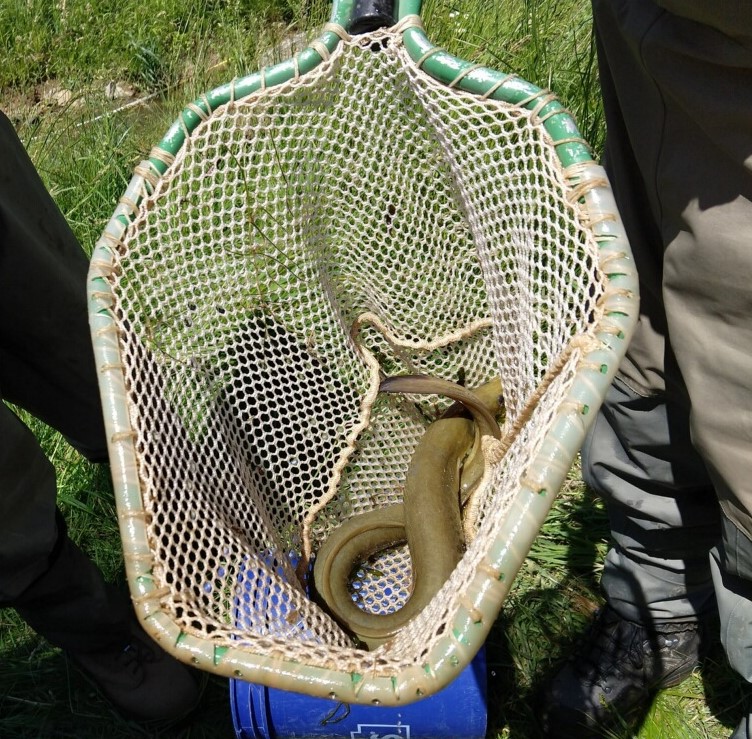
Say ‘Hello’ to the American eel! What would your gut reaction be to coming across this little guy in your local stream? It may startle some (and perhaps even elicit an “Eek!”), but when the Stream Restoration Team found this eel during the Conley Run project in Union County last week it brought about a collective “Woo Hoo!”. Here’s why this was an exciting and significant find for the team:
Eels once were very common in the Susquehanna River basin, but dam construction in the early 1900s ended the eel’s ability to migrate to the Atlantic Ocean as part of their life cycle. It wasn’t just the eels’ life cycle that was disrupted by those dams. Several species of freshwater mussels rely on eels to serve as a host for the mussels’ young. Without the eels to host the young, the mussels can’t reproduce. A single mussel can filter up to 24 gallons of water a day. That’s a lot of sediment removal and a lot cleaner streams and creeks. So, back in 2009, the United States Fish and Wildlife Service (USFWS) began stocking eels in Buffalo Creek and Pine Creek to help replenish the population.
This eel shows that not only are the eels growing (when they are released they are only a couple of inches long), but they are also moving throughout Buffalo Creek to its tributaries which will help mussel populations throughout the watershed.
More eels = More mussels = Cleaner water!
Now, doesn’t that make you want to say “Woo Hoo” too?!
*Fun Fact about the American eel:
The maximum recorded age for an American eel is a whopping 43 years!


Don’t they still need to get to the ocean and back in order to reproduce?
That’s a great question! Yes, each winter, mature American eels return to the Sargasso Sea to spawn. The hatched baby eels will then drift back on the ocean currents to the Atlantic coast and find homes in fresh and brackish waters.